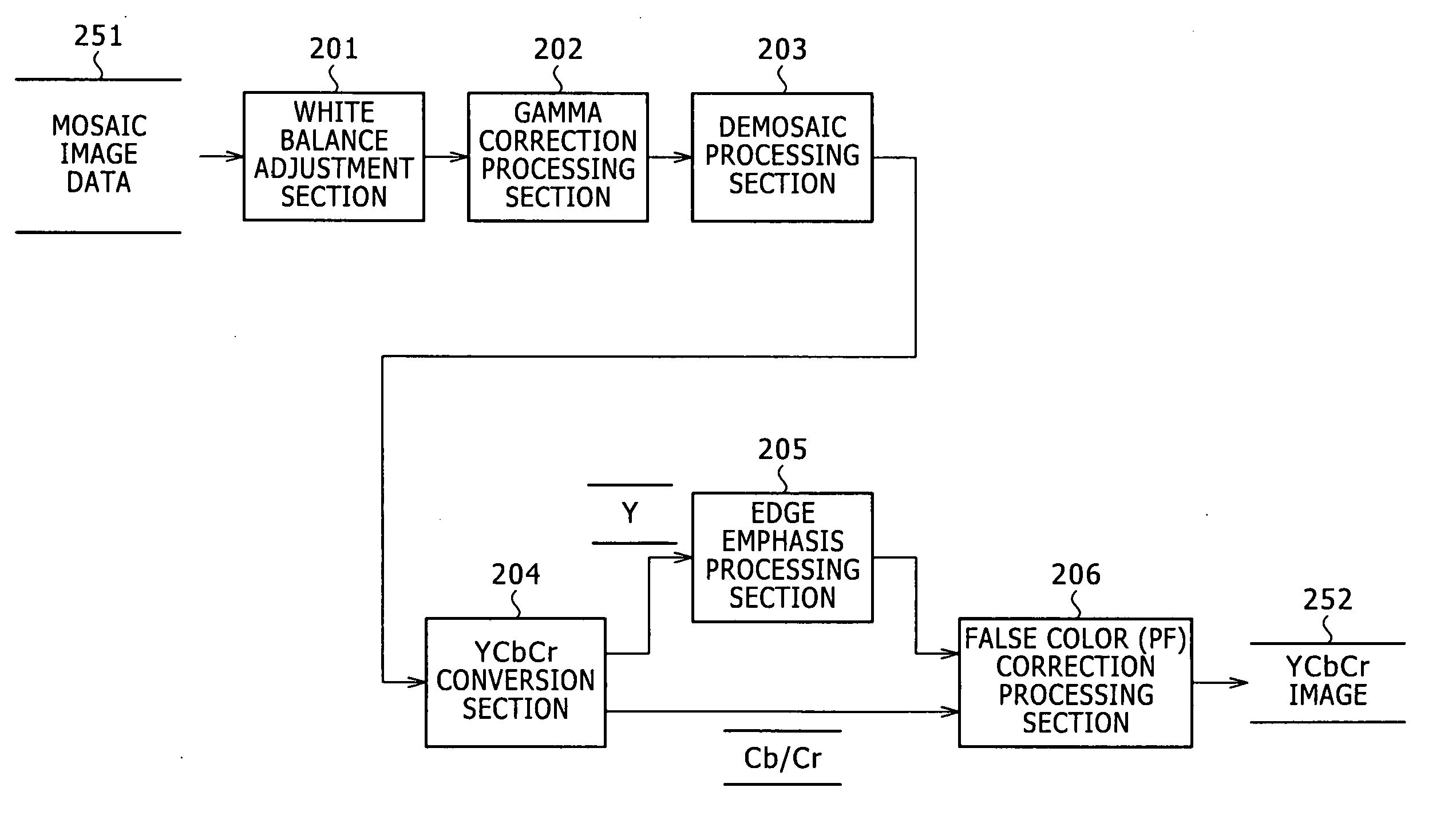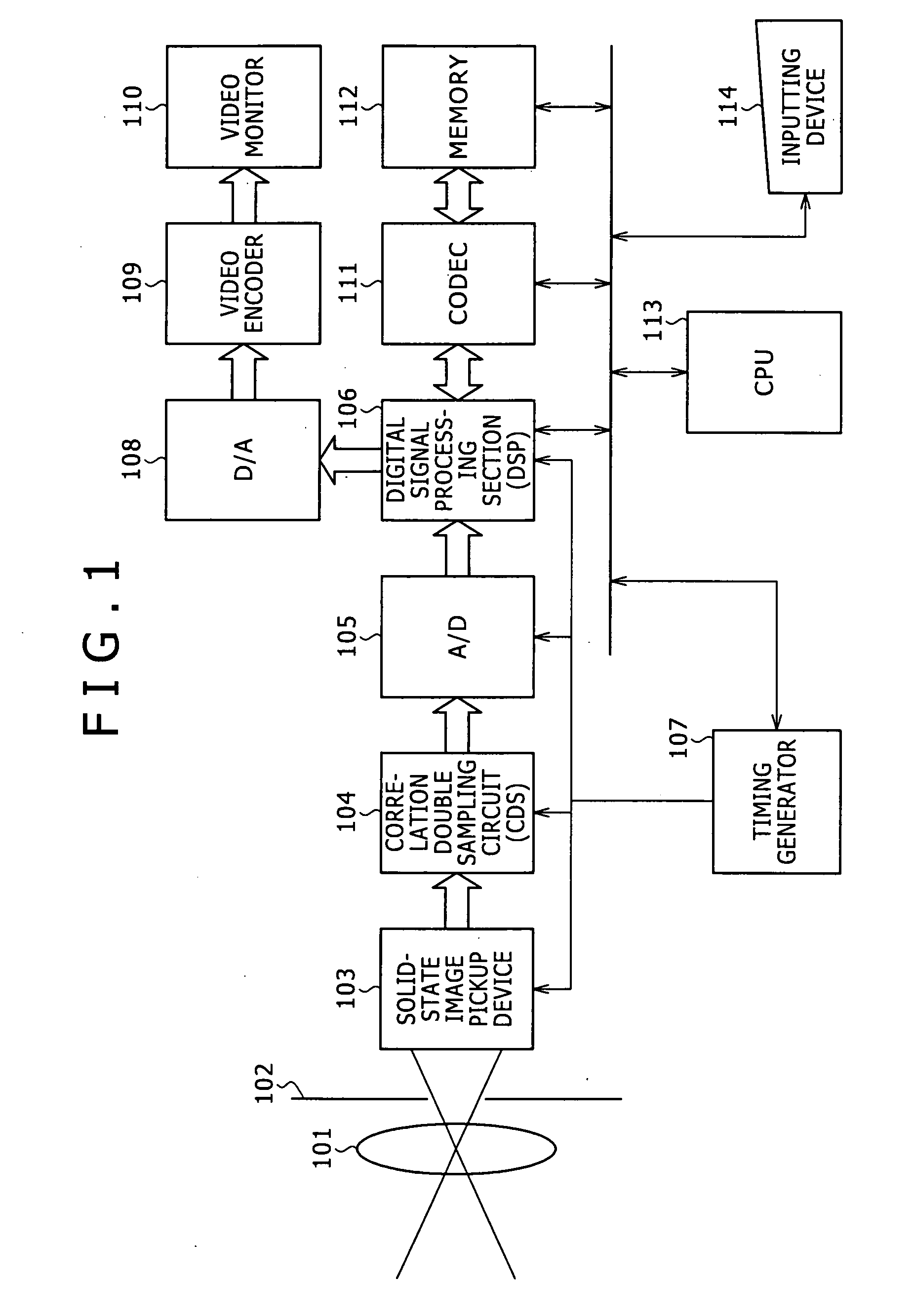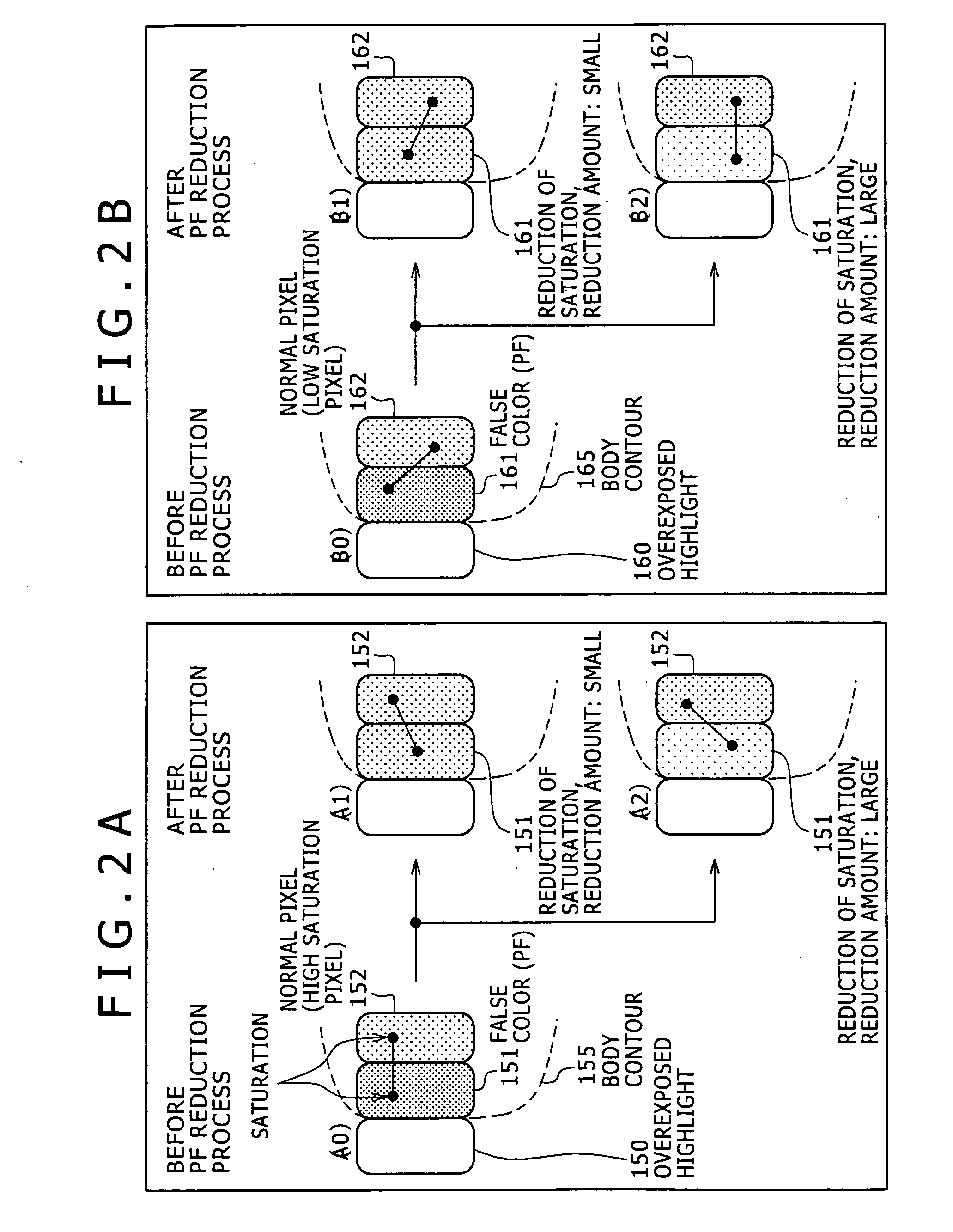Image processing apparatus and image processing method as well as computer program
a technology of image processing and image processing equipment, which is applied in the field of image processing equipment and image processing methods as well as computer programs, can solve the problems of excessive reduction of original color of the image pickup subject, poor influence on the picture quality, and high cost of the produced lens, so as to prevent excessive reduction of the saturation of the pixel and avoid excessive pixel opacity. , the effect of high quality
- Summary
- Abstract
- Description
- Claims
- Application Information
AI Technical Summary
Benefits of technology
Problems solved by technology
Method used
Image
Examples
Embodiment Construction
[0046] In the following, details of an image processing apparatus and an image processing method as well as a computer program according to the present invention are described with reference to the accompanying drawings.
[0047]FIG. 1 shows an example of a configuration of the image processing apparatus. It is to be noted that, while the image processing apparatus shown in FIG. 1 is shown as an example of an apparatus which includes an image pickup section and executes a correction process for image data picked up by the image pickup section, also it is possible for the image processing apparatus of the present invention to receive image data stored in a storage section such as, for example, a hard disk as an input thereto and execute correction of the inputted image. Further, the image data of an object of the correction process may not only be data inputted through the image pickup section but also be any input image data such as image data inputted through a storage section or a n...
PUM
 Login to View More
Login to View More Abstract
Description
Claims
Application Information
 Login to View More
Login to View More - R&D
- Intellectual Property
- Life Sciences
- Materials
- Tech Scout
- Unparalleled Data Quality
- Higher Quality Content
- 60% Fewer Hallucinations
Browse by: Latest US Patents, China's latest patents, Technical Efficacy Thesaurus, Application Domain, Technology Topic, Popular Technical Reports.
© 2025 PatSnap. All rights reserved.Legal|Privacy policy|Modern Slavery Act Transparency Statement|Sitemap|About US| Contact US: help@patsnap.com



